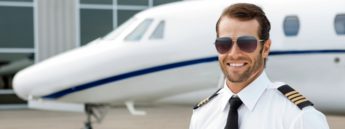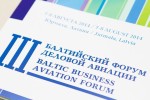Internet of Things: Where is the Opportunity within Flight Training?
There is no doubt that the modern world is connected by a wide range of devices. Talking about the future, all the forecasts concerning the idea of the connection of different things to the Internet in the coming years are truly spectacular.
The analysts from Gartner hold the belief that by 2020 there will be over 50 billion connected devices. So, even if it seems funny and impossible, it becomes obvious that anything that can be connected or will be connected soon.
These days more and more objects of a daily usage, such as various devices, vehicles or equipment, are the parts of the network which can locate, track, monitor or manage any items connected to the Internet.
Today’s technological solutions enable to connect devices in a very smart way by providing them with the ability to ‘think’, ‘analyze’, and ‘plan’. This is called the era of the Internet of Things (IoT). According to scientists, the Internet of Things technology might bring the next world revolution after the development of computers as well as the start of the massive usage of the Internet.
To make it easier to comprehend it might be useful to mention that the Internet of Things technology is built on the cloud computing and the network of data-gathering sensors. The IoT is a growing network of the physical objects within Internet connectivity. Those items when being connected to the Internet send and receive different data to and from each other. By this point, the IoT extends Internet connectivity beyond such traditional devices as desktops, laptops, tablets and smartphones to a diverse range of devices. The examples of the IoT might include electronic appliances such as ‘smart fridge’, lights, alarm clocks, ‘smart cars’, and many more. For instance, the IoT technology and its opportunity allowing to analyze big data in Healthcare saves our lives.
Although the notion that the aviation industry might be reshaped by the network and the Internet of Things technology seems to be a distant future, it is actually happening now. In fact, this technology has been recently adapted to the aviation industry, too.
Data – ‘New everything’
The key value of the IoT is data, data, and data one more time. Considering the aviation industry, the impact of data and its gathering as well as analysis is huge. Since the Internet of Things technology has been applied to the aviation it has brought a lot of value to the whole industry. The technology helps to collect large amounts of data and apply it in real-time in order to make data-based decisions reasonably and quickly. Moreover, a successful application of the IoT technology in this sector has become possible by offering the multiple opportunities to improve operational efficiency and reduce expenses. For example, airlines by the means of the IoT technology are able to track flight data with the aim of reducing fuel costs, shortening travel times, boosting efficiency and improving the overall travel experience for passengers. Talking about the IoT in aviation, there are three main keywords that define it: safety, passenger comfort and costs saving.
The data-driven approach within the aviation industry has brought the opportunity to change this field from the traditional extensive management to the intensive management.
IoT in flight training
Basically, the IoT technology makes flight training safer and more predictable. Generally, flight training or post-flight information is gathered and analyzed manually – just by conducting a simple interview between a flight instructor and a student. However, in order to improve the future training quality an advanced, flexible, and robust solution is required. Today the Internet of Things technology offers many solutions able to collect, access and analyze a huge amount of flight data in real time or within a few minutes after the aircraft’s landing.
What concerns the flight training centers that have already started implementing the IoT technology we can notice some possibilities to improve both Initial as well as Type rating trainings.
Flight Tracker – for Initial training
The Flight Tracker device among the IoT technology gives an opportunity for aviation training centers to change the way students train. The Flight Tracker used for the initial flight training enables tracking flight status in real time as well as gathers and processes flight data within aviation training management software. This technology allows flight instructors to see how student-pilot operates an aircraft in solo flight by providing useful information for a debriefing and flight analysis. The Flight Tracker visualizes live and historical data such as longitude, latitude, altitude, ground speed, 2-D maps. The device uses GPS technology and gets a map showing where the aircraft should be at the moment. Usually the tracker provides almost real-time information which is approximately 1-2 seconds of refresh rate, and also has integrated an internal battery with up to 16 working hours.
It is worth to mention that information gathered by all the sensors present little value if there is no infrastructure to process and analyze it. That is why various cloud based applications, for example, aviation training management software, are the key features in terms of gathered data process. For that reason flight training center should consider the implementation of modern management software.
For pilots and more – FFS Terminal
Talking about the Type rating training for pilots, there is an innovative the IoT market solution as full flight simulator’s self-service info Terminal.
The FFS Terminal is freestanding self-service equipment located in the flight simulators’ area which involves the usage of a touch screen technology to guide pilots, flight instructors, training managers, engineers and CEOs through the whole flight training process. The device is designed to efficiently streamline simulator sessions by monitoring and managing training time as well as tracking simulator’s condition in a smart way and from the one environment.
The Terminal is equipped with a mechanism which is meant to process and analyze the flight training data. The flight training data that appear in the Terminal is processed and analyzed within aviation training management software by providing the useful insights for flight instructors and student-pilot. It allows interested parties to follow student’s progress more systematically.
Bigger, better, faster, cheaper
On the whole, the IoT solutions designed particularly for aviation training speak for themselves. The IoT technology allows to collect, process and analyze a vast amount of significant data by converting it into the data-based insights. To conclude, the usage of such modern technologies as the IoT might result in everything becoming bigger, better, faster and cheaper.
Source: BAA Training
Share the post "Internet of Things: Where is the Opportunity within Flight Training?"
Publishing or copying the content of AVIATION Times without a written electronic permission is strictly forbidden. If you have any information, tips, videos, photos or your press releases for us contact us at news@aviation-times.aero.
AVIATION TIMES © Copyright 2012 - 2025









